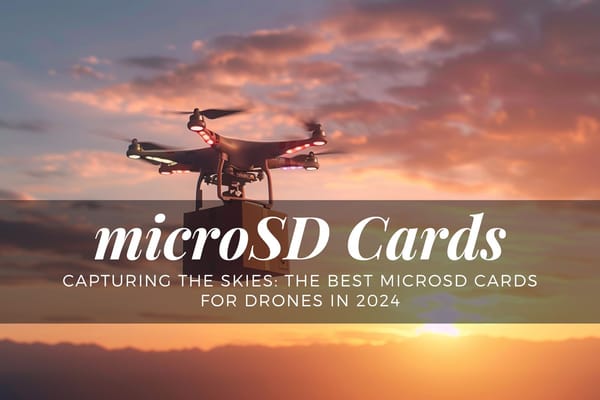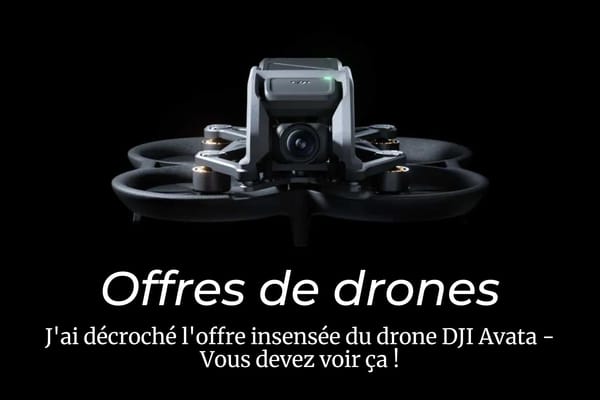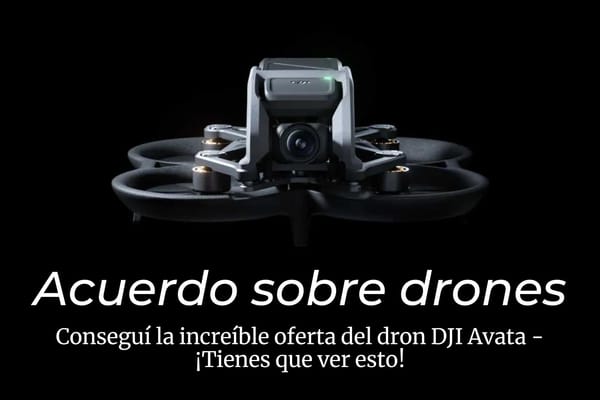DJI Mini 3 vs DJI Mini 3 Pro: Unveiling the Differences
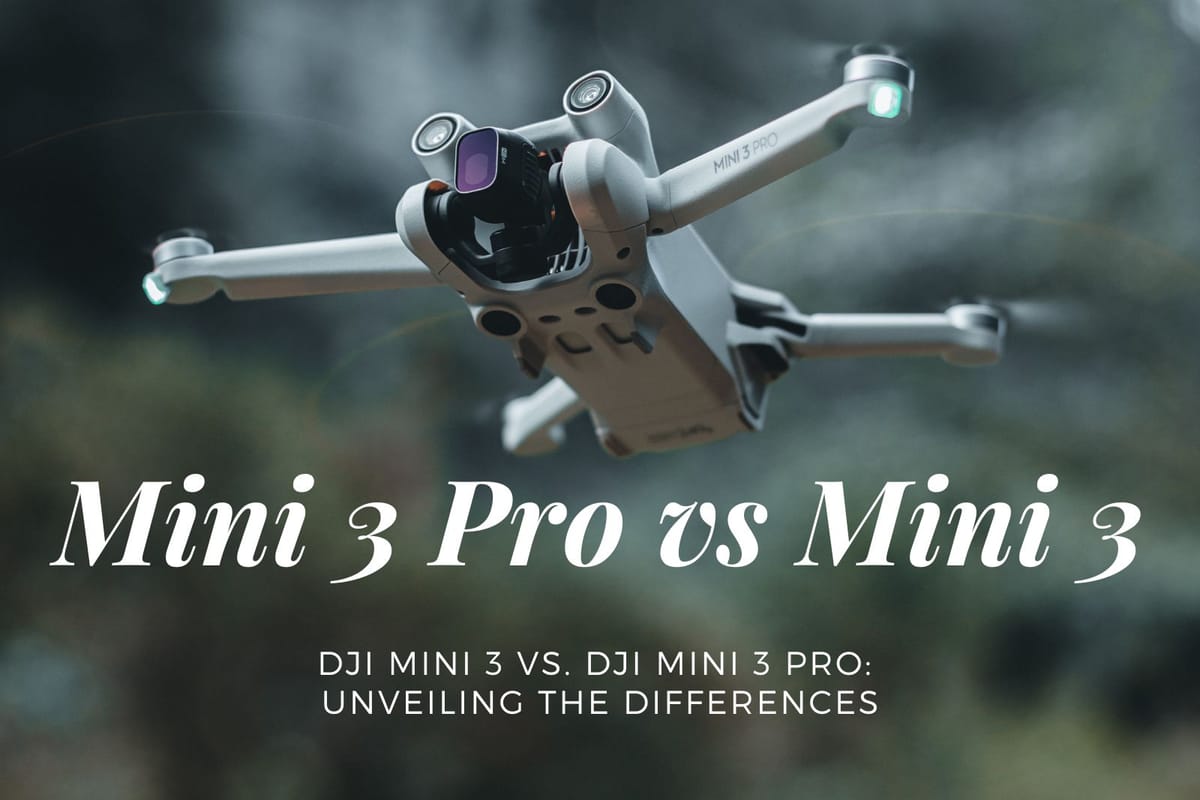
Introduction
In the world of drones, innovation knows no bounds, and DJI stands at the forefront of this exhilarating technological landscape. With each new release, DJI continues to redefine what's possible in the realm of aerial photography and videography. The latest offerings, the DJI Mini 3 vs DJI Mini 3 Pro, have sent ripples of excitement through the drone community. As we embark on this captivating journey comparing the DJI Mini 3 vs DJI Mini 3 Pro, we'll unveil the distinctions that set these remarkable drones apart.
DJI's Mini series drones have captured the hearts and skies of enthusiasts worldwide, thanks to their sleek, compact design and impressive capabilities. These pint-sized powerhouses have opened up endless possibilities for both beginners and seasoned flyers. Now, with the advent of the DJI Mini 3 vs DJI Mini 3 Pro, the stakes have been raised, and expectations have soared.
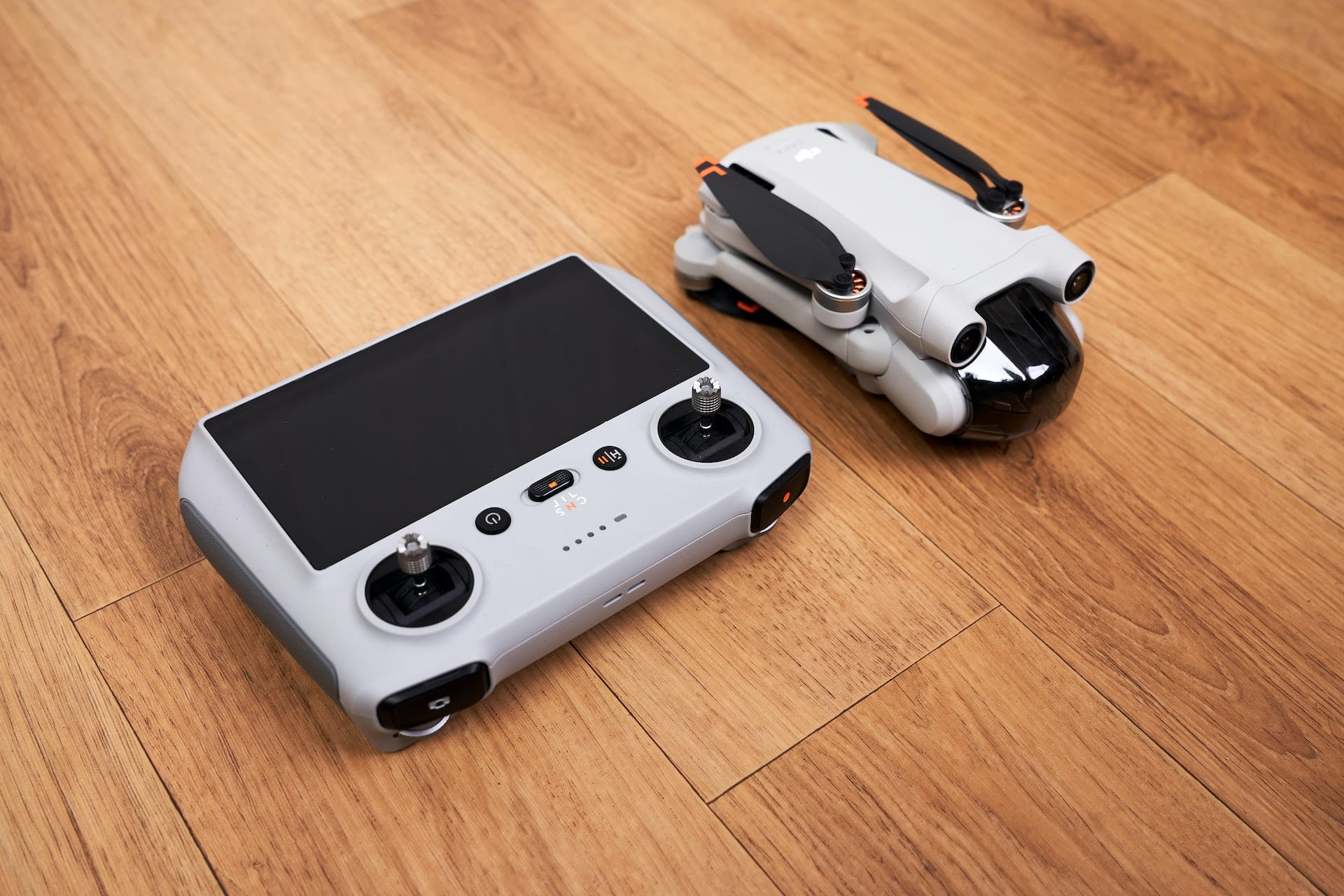
In this comprehensive comparison, we'll dissect every facet of these two aerial marvels. From their design and performance to the advanced technology under the hood, we'll leave no stone unturned. Whether you're a budding drone pilot eager to take your first flight or a seasoned professional seeking the ultimate tool for your craft, this exploration of the DJI Mini 3 vs DJI Mini 3 Pro will provide the insights you need to make an informed decision.
So, fasten your seatbelts, or should we say, propellers, as we embark on a journey through the skies, unveiling the key differences between these two exceptional drones. Whether you're an aerial photographer, an adventure seeker, or simply someone looking to explore the skies from a new perspective, by the end of this comparison, you'll have a clearer picture of which drone suits your unique needs and aspirations.
DJI Mini 3 vs DJI Mini 3 Pro
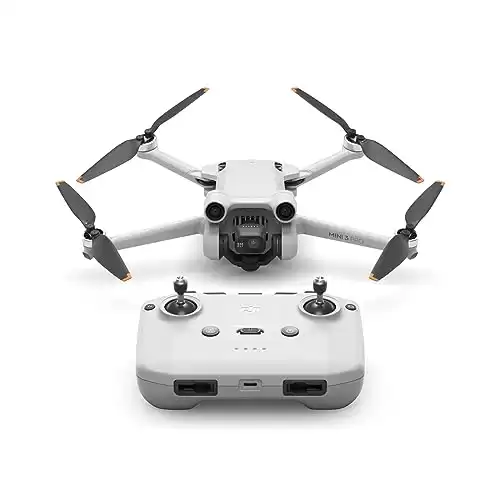
DJI Mini 3 Pro with RC-N1 Remote
- Up to 4K60p Video & 48MP Raw Stills
- Tri-Directional Obstacle Avoidance
- Regulation-Friendly 8.8 oz Weight
- DJI RC-N1 Smartphone Remote Included
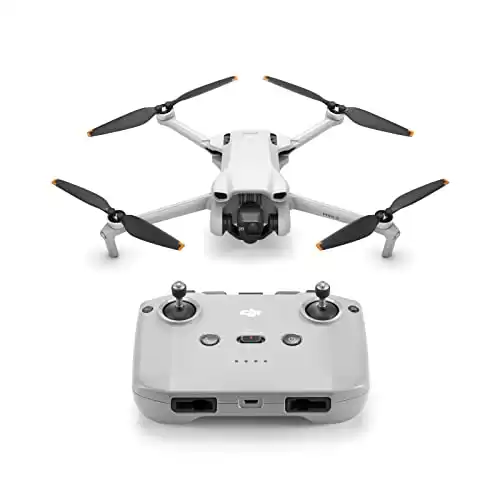
DJI Mini 3 with RC-N1 Remote
- Under 249 g
- Extended Battery Life
- 4K HDR Video
- True Vertical Shooting
- Intelligent Features
- 38kph (Level 5) Wind Resistance
- DJI RC-N1 Controller
- Beginner-Friendly, Easy-To-Fly, and Easy-To-Use
Weight and Registration
When it comes to drones, weight plays a crucial role in determining not only their performance but also the regulations that govern their operation. Both the DJI Mini 3 vs DJI Mini 3 Pro are renowned for their featherlight designs, tipping the scales at just a fraction of what larger drones weigh. This is where their journey to the skies begins, as these drones are often exempt from registration in many countries.
The advantage of such a lightweight build cannot be overstated. It allows for effortless portability, making these drones the perfect travel companions. Whether you're hiking up a mountain or exploring a bustling city, these compact marvels easily slip into your backpack without weighing you down. But remember, even though they may be exempt from registration, they are not exempt from adhering to local regulations and laws.
Before taking flight, it's essential to check the specific rules and regulations in your area. While these drones may not require registration, you'll still need to operate them responsibly and safely. This means respecting no-fly zones, flying at permissible altitudes, and keeping your drone within line of sight at all times. Weight might exempt you from paperwork, but it doesn't absolve you from responsible piloting.
In essence, the lightweight design of both the DJI Mini 3 vs DJI Mini 3 Pro is a testament to DJI's commitment to creating drones that are accessible and hassle-free for enthusiasts of all levels. However, it's crucial to remember that with great freedom comes great responsibility, and staying informed about local regulations is a must to ensure safe and enjoyable flights.
Speed and Agility
When it comes to drones, speed and agility are critical factors for capturing stunning aerial footage and achieving precise control during flight. In this comparison, we'll dive into the speed and agility specifications of two popular drones: the DJI Mini 3 vs DJI Mini 3 Pro.
Speed Comparison
DJI Mini 3 Pro
- Max Speed (S Mode): 16 m/s (at sea level, no wind)
- Max Speed (N Mode): 10 m/s (at sea level, no wind)
- Max Speed (C Mode): 6 m/s (at sea level, no wind)
- Max Wind Speed Resistance: 10.7 m/s (Level 5)
DJI Mini 3
- Max Horizontal Speed: 16 m/s (at sea level, no wind)
- Max Ascent Speed: 5 m/s
- Max Descent Speed: 3.5 m/s
- Max Wind Speed Resistance: 10.7 m/s (Level 5)
In terms of speed, both the DJI Mini 3 vs DJI Mini 3 Pro offer a maximum horizontal speed of 16 m/s. This speed allows for swift movement and covering a considerable distance during flight. Additionally, they both share the same wind resistance level, capable of handling winds up to 10.7 m/s (Level 5). These features make them suitable for various flying conditions.
Agility Comparison
DJI Mini 3 Pro
- Max Pitch Angle (S Mode): 40° forward, 35° backward
- Max Pitch Angle (N Mode): 25°
- Max Pitch Angle (C Mode): 25°
- Gimbal Stabilization: 3-axis mechanical gimbal (tilt, roll, and pan)
- Max Control Speed (tilt, S Mode): 130°/s
- Max Control Speed (tilt, N Mode): 75°/s
- Max Control Speed (tilt, C Mode): 30°/s
- Angular Vibration Range: ±0.01°
DJI Mini 3
- Max Pitch Angle: 40°
- Gimbal Stabilization: 3-axis mechanical gimbal (tilt, roll, and pan)
- Max Control Speed (tilt): 100°/s
- Angular Vibration Range: ±0.01°
The DJI Mini 3 Pro offers three different flight modes (S Mode, N Mode, and C Mode), each with varying pitch angles and control speeds. This versatility allows for precise control tailored to different filming or maneuvering needs.
In summary, both drones share similar speed and agility features in terms of maximum horizontal speed and wind resistance. However, the DJI Mini 3 Pro provides additional versatility with its multiple flight modes and options, making it an attractive choice for users seeking more advanced aerial capabilities. Ultimately, your choice will depend on your specific needs and preferences as a drone pilot.
Max Angular Velocity
When it comes to choosing the right drone, understanding the specifications is crucial. One key aspect of a drone's performance is its maximum angular velocity, which determines how fast the drone can rotate in different flight modes. In this comparison, we will look at the Max Angular Velocity of the DJI Mini 3 vs DJI Mini 3 Pro.
DJI Mini 3 Pro
Max Angular Velocity (by default)
- S Mode: 130°/s
- Adjustable between 20°/s and 250°/s in the app
- N Mode: 75°/s
- Adjustable between 20°/s and 120°/s in the app
- C Mode: 30°/s
- Adjustable between 20°/s and 60°/s in the app
DJI Mini 3
Max Angular Velocity (by default)
- S Mode: 130°/s
- Adjustable between 20°/s and 250°/s in the app
- N Mode: 75°/s
- Adjustable between 20°/s and 120°/s in the app
- C Mode: 30°/s
- Adjustable between 20°/s and 60°/s in the app
The DJI Mini 3 offers a range of angular velocities depending on the flight mode selected. In its default settings, it provides impressive agility in S Mode with a maximum angular velocity of 130°/s. This allows for quick and responsive movements, ideal for capturing dynamic shots.
Surprisingly, the DJI Mini 3 Pro shares the same default maximum angular velocity values as the DJI Mini 3. This means that both drones have identical agility when it comes to rotational speed, regardless of the flight mode.
In terms of maximum angular velocity, there is no difference between the DJI Mini 3 vs DJI Mini 3 Pro. Both drones offer the same level of agility and control when it comes to rotation. If you're considering these drones for their maneuverability, you can expect similar performance from both models.
When choosing between the two, you may want to focus on other differentiating features, such as camera capabilities, flight time, or any other specific requirements you have for your drone. The decision ultimately comes down to your individual needs and preferences.
GNSS Systems
Global Navigation Satellite Systems (GNSS) play a pivotal role in ensuring accurate positioning and reliable navigation for drones. Both the DJI Mini 3 vs DJI Mini 3 Pro incorporate a combination of satellite systems, including GPS, GLONASS, Galileo, and BeiDou. These advanced GNSS setups ensure that your drone stays firmly on course and responds precisely to your commands, even in challenging environments.
Video Transmission and Live View
DJI Mini 3 vs DJI Mini 3 Pro are two popular drones known for their compact size and impressive features. One crucial aspect of any drone is its video transmission and live view capabilities. In this comparison, we'll delve into the specifications of these two drones to help you understand how they stack up in terms of video transmission and live view performance.
Video Transmission System
DJI Mini 3 Pro
Video Transmission System: DJI O3
Live View Quality: 1080p/30fps
Operating Frequency: 2.400-2.4835 GHz, 5.725-5.850 GHz
Transmission Power (EIRP):
- 2.4 GHz: < 26 dBm (FCC), < 20 dBm (CE/SRRC/MIC)
- 5.8 GHz: < 26 dBm (FCC/SRRC), < 14 dBm (CE) Communication Bandwidth: 1.4MHz/3MHz/10MHz/20MHz/40MHz
Latency (depending on environmental conditions and mobile device): - Aircraft + Remote Controller: Approx. 120 ms Max Video Bitrate: Aircraft + Remote Controller: 18 Mbps Max Download Bitrate: DJI O3: RC-N1 Remote Controller and DJI RC: 5.5 MB/s; Wi-Fi 5: Max 25 MB/s
DJI Mini 3
Video Transmission System: DJI O2
Live View Quality: Remote Controller: 720p/30fps
Operating Frequency: 2.400-2.4835 GHz, 5.725-5.850 GHz
Transmission Power (EIRP):
- 2.400-2.4835 GHz: < 26 dBm (FCC), < 20 dBm (CE/SRRC/MIC)
- 5.725-5.850 GHz: < 26 dBm (FCC/SRRC), < 14 dBm (CE) Max Transmission Distance (free of interference):
- FCC: 10 km
- CE: 6 km
- SRRC: 6 km
- MIC: 6 km Max Transmission Distance (with interference):
- Strong Interference: urban landscape, approx. 1.5-3 km
- Medium Interference: suburban landscape, approx. 3-6 km
- Low Interference: suburb/seaside, approx. 6-10 km
Both the DJI Mini 3 vs DJI Mini 3 Pro utilize DJI's proprietary video transmission systems, the O2 and O3, respectively. The Mini 3 Pro features a more advanced system (O3), which supports higher live view quality at 1080p/30fps compared to the Mini 3's 720p/30fps.
Both drones offer dual operating frequencies (2.4 GHz and 5.8 GHz), allowing you to choose the most suitable frequency based on your location and interference levels. This flexibility ensures a stable connection.
In terms of transmission power and distance, the Mini 3 Pro holds an advantage. It boasts a longer maximum transmission distance, especially under ideal conditions (10 km for the Mini 3 Pro compared to 6 km for the Mini 3). Additionally, the Mini 3 Pro features higher transmission power, providing better resistance to interference.
Latency is a critical factor for real-time drone piloting and video streaming. The Mini 3 Pro offers a lower latency of approximately 120 ms, ensuring a more responsive piloting experience compared to the Mini 3.
The Mini 3 Pro features a higher max video bitrate at 18 Mbps, potentially resulting in better video quality during transmission. Additionally, it offers a higher max download bitrate of 5.5 MB/s with the RC-N1 Remote Controller and DJI RC, enhancing the efficiency of transferring footage.
While both the DJI Mini 3 vs DJI Mini 3 Pro provide reliable video transmission and live view capabilities, the Mini 3 Pro stands out with its superior live view quality, longer transmission distance, lower latency, and higher bitrates. These features make it a preferable choice for users who prioritize a more robust and responsive video transmission system. However, it's important to consider your specific needs and budget when choosing between these two drones.
Connectivity and Technology
In the realm of connectivity, the DJI Mini 3 Pro takes advantage of the latest Bluetooth technology, featuring Bluetooth 5.2, while the DJI Mini 3 sticks with Bluetooth 4.2. The upgraded Bluetooth version in the Mini 3 Pro may provide improved connectivity stability and performance, particularly when connecting to your smartphone or other devices.
Charging and Battery
Charging convenience is essential for uninterrupted flights. Both drones can be charged with the DJI 30W USB-C Charger and the Two-Way Charging Hub, ensuring you spend less time waiting and more time in the sky. While the charging times are similar, the Two-Way Charging Hub allows you to charge multiple batteries in sequence, enhancing your overall flying experience.
The DJI Mini 3 vs DJI Mini 3 Pro have nearly identical battery and charging specifications, providing users with consistent and convenient options for extended flight time and efficient charging. However, it's essential to note that the Intelligent Flight Battery Plus is sold separately and only available in select countries and regions, so users should consider their specific needs and budget when making a choice between these two drones.
Video Quality

When it comes to choosing a drone, video quality is often a top consideration for many enthusiasts and professionals. DJI offers two impressive options in the DJI Mini 3 vs DJI Mini 3 Pro. In this comparison, we'll dive into the key specifications related to video quality for both drones.
Camera and Sensor
DJI Mini 3 Pro
- Image Sensor: 1/1.3-inch CMOS
- Effective Pixels: 48MP
- Lens: FOV 82.1°, f/1.7 aperture
- ISO Range: Video - 100-6400, Photo - 100-6400
- Shutter Speed: Electronic Shutter, 2-1/8000 s
- Max Image Size: 8064 × 6048
- Video Resolution:
- 4K: 3840×2160 at various frame rates
- 2.7K: 2720×1530 at various frame rates
- FHD: 1920×1080 at various frame rates
- Slow Motion: 1920×1080 at 120fps
- Video Format: MP4/MOV (H.264/H.265)
- Max Video Bitrate: 150 Mbps
- Color Profiles: Normal, D-Cinelike
- Digital Zoom: Up to 4x
DJI Mini 3
- Image Sensor: 1/1.3-inch CMOS
- Effective Pixels: 48MP
- Lens: FOV 82.1°, f/1.7 aperture
- ISO Range: Video - 100-3200, Photo - 100-3200
- Shutter Speed: Electronic Shutter, 2-1/8000 s
- Max Image Size: 8064×6048
- Video Resolution:
- 4K: 3840×2160 at various frame rates
- 2.7K: 2720×1530 at various frame rates
- FHD: 1920×1080 at various frame rates
- Video Format: MP4 (H.264)
- Max Video Bitrate: 100 Mbps
- Color Mode: Normal
- Digital Zoom: Up to 4x
Video Transmission
DJI Mini 3 Pro
- Video Transmission System: DJI O3
- Live View Quality: 1080p/30fps
- Max Transmission Distance: FCC: 12 km, CE: 8 km
DJI Mini 3
- Video Transmission System: DJI O2
- Live View Quality: Remote Controller - 720p/30fps
- Max Transmission Distance: FCC: 10 km, CE: 6 km
Additional Features
DJI Mini 3 Pro
- QuickShot Modes: Dronie, Helix, Rocket, Circle, Boomerang, Asteroid
- Gimbal: 3-axis mechanical gimbal
- Stabilization: Tilt, roll, and pan
- Max Control Speed (tilt): 100°/s
DJI Mini 3
- QuickShot Modes: Dronie, Helix, Rocket, Circle, Boomerang
- Gimbal: 3-axis mechanical gimbal
- Stabilization: Tilt, roll, and pan
- Max Control Speed (tilt): 100°/s
Both the DJI Mini 3 vs DJI Mini 3 Pro offer impressive video quality with 4K recording capabilities and high-resolution image sensors. The Mini 3 Pro, however, provides some additional features such as higher ISO range, slower motion video recording, and improved video transmission with 1080p live view quality. If you prioritize enhanced video capabilities, especially in challenging lighting conditions, the Mini 3 Pro may be the better choice for you. However, the Mini 3 also offers excellent video quality for its size and weight, making it a solid option for drone enthusiasts and content creators.
Please note that these specifications are based on available information, and actual performance may vary depending on firmware updates and real-world conditions. Make sure to check for any firmware updates to get the best performance out of your drone.
Memory Card Support
Storage capacity is another critical factor for content creators. Both drones support microSD cards, but it's essential to note that the DJI Mini 3 Pro can accommodate higher-capacity cards, allowing you to capture more footage without constantly swapping cards.
Memory Card Support for DJI Mini 3 Pro
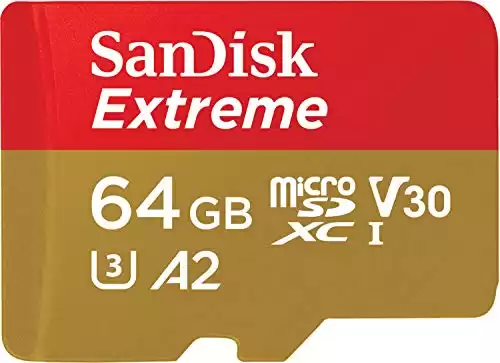
SanDisk Extreme 64GB
- Up to 160MB/s read speeds to save time transferring high-res images and 4K UHD videos (2). Requires compatible devices capable of reaching such speeds.
- Up to 60MB/s write speeds for fast shooting. Requires compatible devices capable of reaching such speeds.
- 4K UHD and Full HD-ready (2) with UHS Speed Class 3 (U3) and Video Speed Class 30 (V30)(5)
- Rated A2 for faster loading and in-app performance (8)
- Built for and tested in harsh conditions: temperature-proof, water-proof, shock-proof and x-ray proof (4)
Supported Memory Cards
- UHS-I Speed Class 3 or above is required.
- A list of recommended microSD cards includes:
- Lexar High Endurance 64GB V30 microSDXC
- Lexar High Endurance 128GB V30 microSDXC
- Lexar 667x 256GB V30 A1 microSDXC
- Lexar 1066x 64GB V30 A2 microSDXC
- Samsung EVO Plus 512GB microSDXC
- Kingston Canvas Go!Plus 64GB V30 A2 microSDXC
- Kingston Canvas Go!Plus 256GB V30 A2 microSDXC
Supported Memory Cards
Memory Card Support for DJI Mini 3
SanDisk Extreme 32GB

SanDisk Extreme 64GB
- Up to 160MB/s read speeds to save time transferring high-res images and 4K UHD videos (2). Requires compatible devices capable of reaching such speeds.
- Up to 60MB/s write speeds for fast shooting. Requires compatible devices capable of reaching such speeds.
- 4K UHD and Full HD-ready (2) with UHS Speed Class 3 (U3) and Video Speed Class 30 (V30)(5)
- Rated A2 for faster loading and in-app performance (8)
- Built for and tested in harsh conditions: temperature-proof, water-proof, shock-proof and x-ray proof (4)
Supported Memory Cards
- UHS-I Speed Class 3 or above is required.
- A list of recommended microSD cards includes:
- Samsung PRO Plus 256GB V30 A2 microSDXC
- Kingston Canvas Go!Plus 64GB V30 A2 microSDXC
- Kingston Canvas Go!Plus 128GB V30 A2 microSDXC
- Kingston Canvas Go!Plus 256GB V30 A2 microSDXC
- Kingston Canvas React Plus 64GB V30 A1 microSDXC
- Kingston Canvas React Plus 128GB V30 A1 microSDXC
Both the DJI Mini 3 vs DJI Mini 3 Pro support UHS-I Speed Class 3 or above microSD cards, ensuring that users can capture high-definition video and images without performance issues. However, the DJI Mini 3 Pro offers a wider range of recommended memory card options, including higher capacity cards, which can be beneficial for extended flight sessions without having to worry about running out of storage space.
It's worth noting that selecting a compatible memory card is crucial to ensure smooth operation and reliable storage of your aerial footage. Always check the manufacturer's recommendations and consider the capacity that suits your needs best.
In summary, while both drones offer robust memory card support, the DJI Mini 3 Pro provides users with more flexibility in terms of compatible cards, including larger storage options, which can be a deciding factor for those looking to capture a significant amount of content during their flights.
Here's a summary of the key differences between the DJI Mini 3 vs DJI Mini 3 Pro:
Weight and Registration:
- Both drones are lightweight and often exempt from registration.
- Lightweight design allows for easy portability.
- Operators must still adhere to local regulations and safety guidelines.
Speed and Agility:
- Both drones have a maximum horizontal speed of 16 m/s.
- Both have a wind resistance of 10.7 m/s (Level 5).
- DJI Mini 3 Pro offers multiple flight modes with different pitch angles and control speeds, providing more versatility.
Max Angular Velocity:
- Both drones have identical maximum angular velocities across different flight modes, offering similar maneuverability.
GNSS Systems:
- Both drones incorporate GPS, GLONASS, Galileo, and BeiDou systems for accurate positioning and navigation.
Video Transmission and Live View:
- DJI Mini 3 Pro offers higher live view quality at 1080p/30fps.
- DJI Mini 3 Pro has a longer maximum transmission distance (12 km FCC, 8 km CE) and lower latency (approx. 120 ms).
- DJI Mini 3 Pro features higher transmission power and bitrates, potentially resulting in better video quality.
Connectivity and Technology:
- DJI Mini 3 Pro utilizes Bluetooth 5.2, while DJI Mini 3 uses Bluetooth 4.2, potentially providing improved connectivity stability and performance for the Mini 3 Pro.
Charging and Battery:
- Both drones can be charged with the DJI 30W USB-C Charger and Two-Way Charging Hub, allowing for efficient charging of multiple batteries in sequence.
Max Flight Time:
- DJI Mini 3 Pro: 47 minutes (with Intelligent Flight Battery Plus)
- DJI Mini 3: 51 minutes (with Intelligent Flight Battery Plus)
- DJI Mini 3 Pro: 34 minutes (with Intelligent Flight Battery)
- DJI Mini 3: 38 minutes (with Intelligent Flight Battery)
Video Quality:
- Both drones feature 4K recording capabilities with 48MP image sensors.
- DJI Mini 3 Pro offers a higher ISO range, slow-motion video recording, and improved video transmission with 1080p live view quality.
- DJI Mini 3 Pro supports higher-capacity microSD cards for more storage.
The DJI Mini 3 offers a slightly longer maximum flight time compared to the Mini 3 Pro. This extra flight time can be advantageous when you want to cover more ground or capture extended aerial shots.
With the Intelligent Flight Battery Plus, both drones offer impressive extended flight times. The DJI Mini 3 Pro still has a slightly shorter flight time compared to the DJI Mini 3, but both provide ample time for extended aerial exploration and photography.
Similar to the max flight time, the DJI Mini 3 also outperforms the Mini 3 Pro in terms of hovering time. This additional hovering time can be valuable for precise aerial maneuvers and capturing steady shots.
Both drones offer the same maximum flight distance, allowing you to explore and capture footage over long distances without losing control.
It's important to note that the DJI Mini 3 Pro boasts some additional features, such as different flight modes and obstacle avoidance capabilities. These advanced features might justify the slight trade-off in flight time and hovering time when compared to the DJI Mini 3.
In summary, the choice between the DJI Mini 3 vs DJI Mini 3 Pro depends on your specific needs. If you prioritize longer flight and hovering times, the DJI Mini 3 is the better option. However, if you require advanced flight modes and obstacle avoidance, the DJI Mini 3 Pro is worth considering. Regardless of your choice, both drones offer exceptional performance in a compact and portable design.
Conclusion
In the dynamic world of drones, the DJI Mini 3 vs DJI Mini 3 Pro have certainly made a grand entrance. As we conclude our in-depth comparison of these two remarkable aerial marvels, we find ourselves at the crossroads of choice. The question remains: which of these exceptional drones is the right fit for you?
DJI's commitment to innovation and accessibility shines through in both the DJI Mini 3 vs DJI Mini 3 Pro. Their lightweight designs, impressive speed and agility, and advanced GNSS systems underscore DJI's dedication to creating drones that cater to enthusiasts of all levels. These drones are not just tools; they are gateways to adventure, creativity, and new perspectives.
When it comes to the decision between the DJI Mini 3 vs DJI Mini 3 Pro, it ultimately boils down to your unique needs and aspirations as a drone pilot. The Mini 3 Pro boasts enhanced video transmission, lower latency, and superior video quality, making it an excellent choice for those who prioritize advanced aerial capabilities. On the other hand, the Mini 3 still offers outstanding performance and video quality at a slightly more budget-friendly price point, making it a solid option for those who want to embark on their drone journey.
Before you take flight, consider your objectives, experience level, and budget carefully. Both of these drones promise exciting aerial experiences, backed by DJI's renowned quality and innovation. And remember, as technology continues to evolve, firmware updates may bring new features and improvements, so staying up to date is essential.
In closing, whether you're a drone enthusiast, an aspiring content creator, or simply someone eager to explore the world from a different angle, DJI's Mini series has something to offer you. We hope this comparison has provided the insights you need to make an informed decision. As you embark on your drone adventures, don't forget to respect local regulations, fly responsibly, and capture the beauty of our world from the skies. Happy flying!
